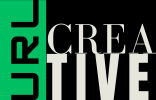Call to Action Best Practices
A Call to Action (CTA) is a critical element on any website, as it directs visitors toward the next step, whether it’s making a purchase, signing up for a newsletter, or booking a consultation. A well-crafted CTA can significantly increase your conversions. Here are some best practices to help you create CTAs that are clear, compelling, and effective.

Clarity is Key
When creating a CTA, clarity should be your top priority. The message should be simple, specific, and easy to understand. Avoid vague phrases like “Click Here” or “Learn More” when possible, as they don’t clearly communicate what users can expect.
Instead, use specific language that tells the user exactly what they’re getting. For example, “Get Your Free Consultation” is more enticing and informative than “Learn More.” By setting clear expectations, you increase the likelihood that users will take the desired action.
Use Action-Oriented Language
The best CTAs use action words that encourage readers to take immediate steps. Verbs like “Get,” “Discover,” “Start,” or “Join” can make your CTA more dynamic. Action-oriented language can also create a sense of energy, helping to persuade users to move forward.
For instance, instead of “Download Now,” try something like “Download Your Free Guide Today.” This phrasing emphasizes immediacy and benefit, which can be more compelling.
Make it Stand Out
A CTA should stand out on the page, so don’t be afraid to make it bold and eye-catching. Use contrasting colors that make the button or link easily noticeable against the background. Larger fonts can also help to draw attention, and spacing around the CTA can make it more prominent.
Visual elements like arrows or icons can also direct attention to your CTA. Just ensure it’s visually consistent with the overall design of your website to maintain a cohesive look.
Create a Sense of Urgency
Creating a sense of urgency in your CTA can be a powerful motivator. Phrases like “Limited Time Offer” or “Only a Few Spots Left” encourage users to act quickly, reducing the likelihood of hesitation. However, be cautious with urgency—overusing it can make your message feel pushy or insincere.
When appropriate, consider adding time-limited incentives. For example, “Book Today and Save 20%” or “Get Started—Offer Ends Soon” can encourage immediate action.
Conclusion
A well-crafted CTA is more than just a button; it’s an invitation for users to engage further with your brand. By focusing on clarity, action-oriented language, visual prominence, and urgency, you can create CTAs that motivate users to take action. Remember, the key is to be clear about the value you’re offering and make it easy for visitors to say “yes.” Try implementing these CTA best practices on your site, and watch your conversions grow.
